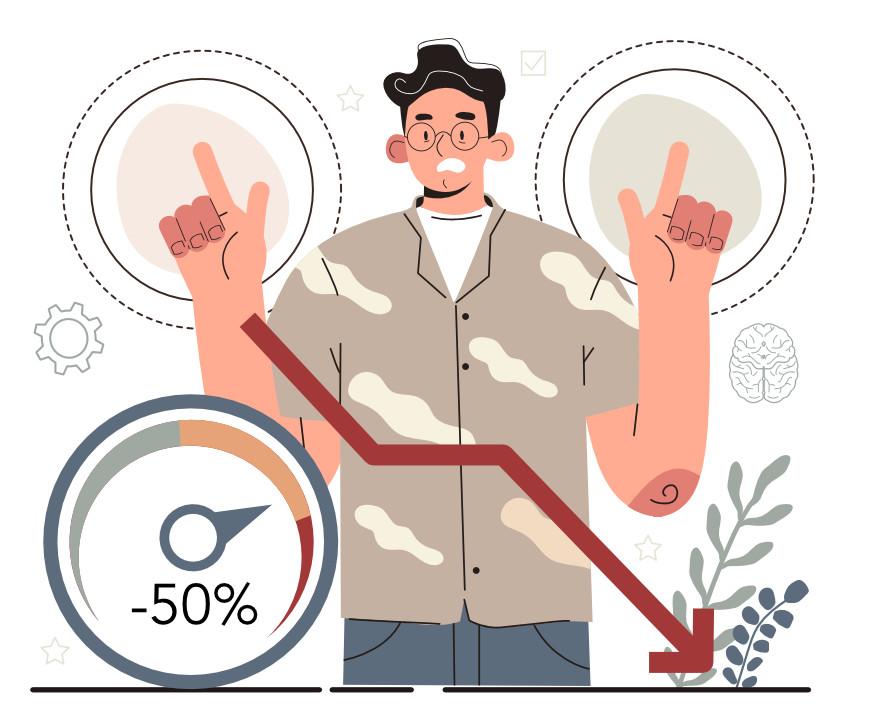For many of us, it’s so familiar: answering emails whilst on a conference call, studying whilst listening to music, or online shopping whilst watching television. Multi-tasking often makes us feel like we are saving time and being more productive, whilst managing the various demands in our lives. However, at work, this high level of task switching where we constantly shift our attention from one thing to the other can actually have negative effects.
Although it might make us feel like we are doing more, multitasking and task-switching at work can impact not only our productivity and focus but also our stress levels and creativity. Not only does it take an average of 23 minutes and 15 seconds to refocus after leaving a task, but – according to a recent monday.com survey – more than half of IT decision-makers in the US, UK, and Australia said they use more than 4 tools every single day for their work.
So, how can business leaders try and create a work environment that best prioritises focus and productivity?
Creating a no-distraction zone
Combating the negative effects of multitasking is all about ensuring minimal interruptions in your team’s momentum on a task. When we are able to focus on one thing, we are more likely to reduce simple mistakes, work faster and make better decisions.
But distractions come from everywhere – whether it is from smartphone notifications, other co-workers, or the temptation to get a snack from the kitchen. As leaders, we must guide our employees on how to create a more focused work environment.
It can be small things like encouraging people to turn off loud phone notifications, providing snacks and water in the office and facilitating places where employees know they can work quietly and uninterrupted.
On a bigger scale, we can try and help minimise interruptions and distractions for workers by being flexible with scheduling non-urgent meetings and helping teams to block out specific times in the day for focused work. As a leader, you should also encourage clearer boundaries between work and personal time so that people get out of the habit of answering emails and work calls outside their work hours.
Setting priorities
Another way to increase focus and productivity during the day is to adopt better time management strategies that put our priorities into better focus. There is one strategy in particular, which is often overlooked because it feels so obvious: the mighty to-do list.
Each day, and at the beginning of each week, I encourage my team to choose three key tasks that, when accomplished, would signify success for them. I encourage them to consider what success would look like and what their future selves would thank their present selves for. This way, day-to-day to-do lists always get done, and you resist jumping on easy tasks to tick off that release nice dopamine, but don’t move the needle.
This approach reduces the stress of last-minute rushing or forgotten assignments and increases motivation – with a better understanding of how long each task will take and the level of focus required.
Try and also make the process as collaborative as possible so that teams can get the support they need when they need it. This way, you can help your teams organise by priority and availability. Find a tool that lets your team do this in a way that reduces the need to go from place to place looking for the information they need. In the old days, having a police-investigation-style board might have been the best way to keep all the information in one place, but in the hybrid era, a digital board is becoming increasingly useful.
Businesses can also help their teams stay on top of priorities by encouraging workers to use the last few minutes of their day to reflect on their accomplishments and review what is left over for them to do tomorrow.
Understanding your people
At the end of the day, we aren’t robots – we can only control so many distractions in our workplace and in our minds. Sometimes emotions like anxiety or stress – whether it is triggered by work or not – can make it even more difficult and energy-consuming to refocus.
Businesses need to encourage people to take regular breaks to recharge and destress with an empathetic approach to leadership. Especially in today’s climate, it’s important that leaders do their best to understand why workers are finding it hard to concentrate without any judgement. Encouraging your team with the right support when they need it will help them become happier, more resilient, and more productive.
Share via:








































